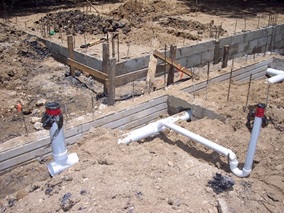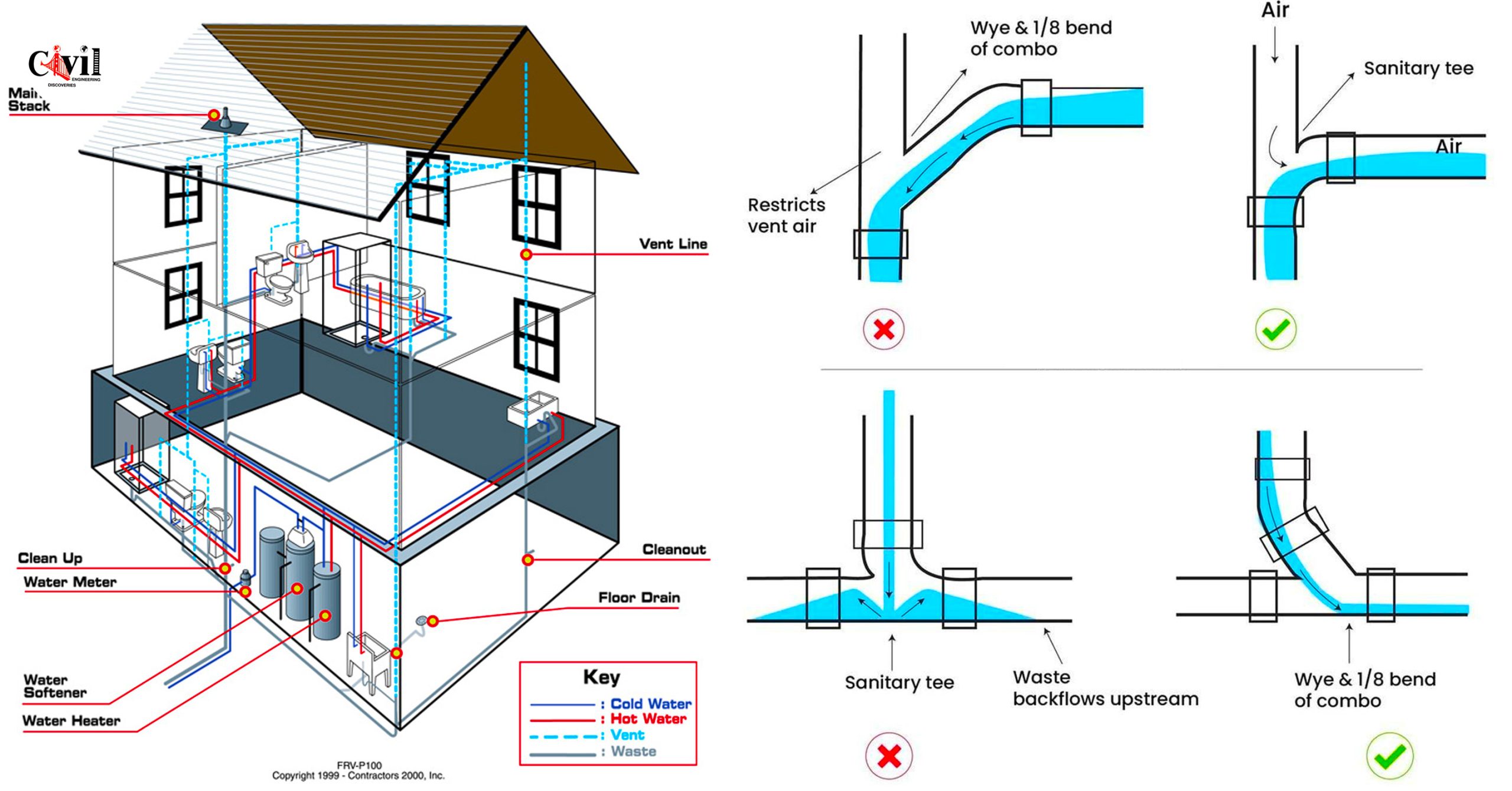A Comprehensive Guide to Your House's Plumbing System Anatomy
A Comprehensive Guide to Your House's Plumbing System Anatomy
Blog Article
The article further down involving The Inner Workings of Your Home's Plumbing is rather motivating. You should look it over.

Comprehending exactly how your home's pipes system functions is necessary for each home owner. From supplying clean water for drinking, food preparation, and showering to safely eliminating wastewater, a well-kept plumbing system is important for your household's health and comfort. In this extensive overview, we'll discover the detailed network that composes your home's pipes and deal pointers on upkeep, upgrades, and handling common issues.
Introduction
Your home's plumbing system is more than just a network of pipes; it's a complicated system that guarantees you have accessibility to tidy water and reliable wastewater removal. Understanding its components and just how they work together can help you avoid expensive repair services and make sure every little thing runs smoothly.
Fundamental Parts of a Pipes System
Pipes and Tubes
At the heart of your plumbing system are the pipes and tubes that lug water throughout your home. These can be constructed from numerous products such as copper, PVC, or PEX, each with its advantages in terms of sturdiness and cost-effectiveness.
Components: Sinks, Toilets, Showers, etc.
Fixtures like sinks, toilets, showers, and bathtubs are where water is used in your house. Recognizing just how these fixtures connect to the pipes system aids in detecting issues and planning upgrades.
Shutoffs and Shut-off Factors
Shutoffs manage the circulation of water in your plumbing system. Shut-off valves are critical during emergencies or when you need to make repair work, allowing you to separate parts of the system without disrupting water circulation to the whole residence.
Water Supply System
Key Water Line
The primary water line connects your home to the local water system or an exclusive well. It's where water enters your home and is dispersed to various fixtures.
Water Meter and Stress Regulatory Authority
The water meter steps your water use, while a stress regulator ensures that water flows at a safe stress throughout your home's plumbing system, preventing damage to pipes and fixtures.
Cold Water vs. Hot Water Lines
Understanding the distinction in between cold water lines, which provide water straight from the primary, and hot water lines, which carry heated water from the hot water heater, helps in repairing and preparing for upgrades.
Drain System
Drain Pipeline and Traps
Drain pipes lug wastewater far from sinks, showers, and bathrooms to the sewer or septic system. Traps prevent sewage system gases from entering your home and likewise trap particles that might cause obstructions.
Ventilation Pipelines
Ventilation pipelines allow air right into the drainage system, stopping suction that could slow drain and cause catches to empty. Correct air flow is vital for maintaining the stability of your plumbing system.
Relevance of Correct Drain
Guaranteeing correct drain prevents backups and water damages. On a regular basis cleaning up drains and keeping catches can prevent costly repair work and prolong the life of your pipes system.
Water Heating System
Types of Water Heaters
Hot water heater can be tankless or standard tank-style. Tankless heating units warmth water on demand, while tanks store heated water for instant use.
Exactly How Water Heaters Link to the Pipes System
Recognizing how hot water heater attach to both the cold water supply and hot water circulation lines aids in diagnosing concerns like insufficient warm water or leakages.
Upkeep Tips for Water Heaters
Regularly flushing your water heater to eliminate debris, inspecting the temperature level setups, and checking for leaks can extend its lifespan and boost power effectiveness.
Typical Pipes Problems
Leaks and Their Causes
Leaks can happen as a result of maturing pipelines, loosened installations, or high water stress. Attending to leakages immediately stops water damages and mold and mildew development.
Blockages and Obstructions
Clogs in drains pipes and toilets are frequently caused by flushing non-flushable items or a buildup of oil and hair. Making use of drainpipe screens and bearing in mind what decreases your drains can stop blockages.
Indicators of Plumbing Troubles to Look For
Low water stress, slow drains pipes, foul odors, or unusually high water costs are indications of possible plumbing problems that should be resolved promptly.
Plumbing Upkeep Tips
Normal Assessments and Checks
Schedule yearly plumbing evaluations to catch concerns early. Look for indicators of leakages, rust, or mineral buildup in taps and showerheads.
DIY Upkeep Tasks
Simple tasks like cleansing tap aerators, checking for commode leaks utilizing color tablets, or protecting exposed pipes in chilly climates can stop significant plumbing problems.
When to Call a Specialist Plumber
Know when a plumbing problem calls for professional know-how. Attempting complicated repair work without appropriate understanding can result in more damages and higher repair work expenses.
Upgrading Your Plumbing System
Reasons for Upgrading
Upgrading to water-efficient components or changing old pipelines can improve water quality, decrease water expenses, and enhance the value of your home.
Modern Plumbing Technologies and Their Advantages
Discover modern technologies like clever leakage detectors, water-saving bathrooms, and energy-efficient water heaters that can conserve cash and minimize environmental influence.
Expense Considerations and ROI
Compute the ahead of time expenses versus long-lasting savings when considering pipes upgrades. Several upgrades spend for themselves with minimized utility expenses and fewer repair work.
Environmental Impact and Conservation
Water-Saving Components and Devices
Installing low-flow taps, showerheads, and bathrooms can considerably reduce water use without giving up performance.
Tips for Reducing Water Use
Simple behaviors like fixing leaks promptly, taking shorter showers, and running full lots of laundry and recipes can save water and lower your energy expenses.
Eco-Friendly Pipes Options
Think about lasting plumbing materials like bamboo for floor covering, which is durable and environmentally friendly, or recycled glass for counter tops.
Emergency Readiness
Steps to Take Throughout a Plumbing Emergency situation
Know where your shut-off valves lie and exactly how to turn off the supply of water in case of a ruptured pipeline or major leakage.
Relevance of Having Emergency Get In Touches With Handy
Maintain contact info for local plumbing technicians or emergency situation services easily available for quick action during a plumbing situation.
DIY Emergency Situation Fixes (When Applicable).
Momentary fixes like using air duct tape to spot a leaking pipeline or positioning a pail under a leaking faucet can lessen damage up until a specialist plumbing professional gets here.
Final thought.
Understanding the composition of your home's plumbing system encourages you to maintain it properly, saving time and money on fixings. By following routine maintenance regimens and staying notified concerning contemporary pipes innovations, you can guarantee your pipes system operates successfully for many years to find.
Exploring Your Homes Plumbing Anatomy
Water Supply System
Main Water Line: This is where water enters your home from the municipal supply or a private well.
Water Meter: Typically located near where the main water line enters the property, it measures the amount of water used.
Shutoff Valve: It s crucial to know where this is in case of emergencies. It allows you to turn off the water supply to the entire house.
Pipes and Fittings: These distribute water throughout your home. Materials can include copper, PVC, or PEX.
Drain-Waste-Vent (DWV) System
Drains: Located in sinks, showers, and tubs, these carry wastewater away.
Traps: U-shaped pipes under sinks that hold standing water, blocking sewer gases from entering the home.
Vents: Pipes that lead from the DWV system to the outside, preventing vacuum formation and allowing gases to escape.
Sewer Line: Carries all wastewater from the home to the municipal sewer system or a septic tank.
Fixtures and Appliances
Sinks, Toilets, and Showers
Dishwashers and Washing Machines
Water Heaters
Maintenance Tips
Regularly check for leaks in exposed pipes and around fixtures.
Inspect the water heater annually for signs of wear.
Clean drains and traps to prevent clogs and odors.
Know how to shut off water to individual fixtures.
When to Call a Professional
Major leaks or burst pipes
Installation of new pipes or fixtures
Septic tank issues
Remodeling projects that involve plumbing changes
Conclusion
Understanding the anatomy of your home's plumbing is key to maintaining a functional and efficient system. Regular checks and knowing when to call in the experts can save you time, money, and stress.
https://www.mavyn.com/blog/exploring-your-homes-plumbing-anatomy

Exploring Your Homes Plumbing Anatomy
Water Supply System
Drain-Waste-Vent (DWV) System
Fixtures and Appliances
Maintenance Tips
When to Call a Professional
Conclusion
Understanding the anatomy of your home's plumbing is key to maintaining a functional and efficient system. Regular checks and knowing when to call in the experts can save you time, money, and stress.
https://www.mavyn.com/blog/exploring-your-homes-plumbing-anatomy
I hope you enjoyed our topic about Anatomy of a House: Understanding the Components. Thank you for taking a few minutes to read our article. Those who appreciated our blog post please remember to share it. I truly appreciate reading our article about Understanding Your Home's Plumbing Anatomy.
Estimate Report this page